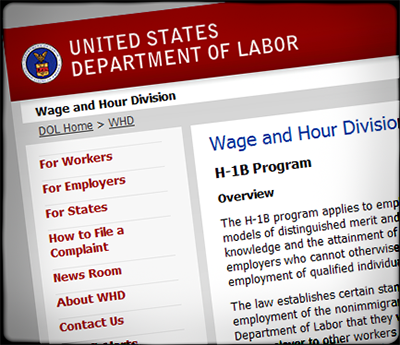
We keep hearing, from the industry and from the Indian press, that denial rates in the H-1B program are rising sharply, that more and more of the dreaded questions about applications (the Request for Evidence (RFE) process) are being asked by DHS staff, and that the post-RFE approval rate in the H-1B program is falling.
So there must be a smaller number of H-1B approvals, right?
Well, no. The number of initial approvals of H-1B applications has risen over the last five years by more than 100,000.
In FY 2015, based on a dataset used both by the Times of India and by the Center, we find that there were 288,501 approvals (of all kinds) in the H-1B program; there were 389,386 of them in the just-finished FY 2019.
How can there be more approvals when the denial rate soars?
The answer can be found in a piece of grade-school math that the Indian publication ignores: the number of H-1B applications filed by U.S. employers. If there are a lot more applications, as there have been, an increasing rate of denials from a modest base will not decrease the number of approvals.
Yes, the denial rate went up from a scrawny 4.3 percent in 2015 to a more respectable 15.1 percent in 2019, but in the same period the number of approvals soared. Both the industry and the Indian press have howled about how much harder the screening process has become; this should be taken with a grain of statistical salt.
In FY 2015, the denials in the H-1B program were at 4.3 percent of the completions (i.e., decisions) meaning that the industry (and the largely Indian H-1B work force) were winning, to put it another way, by a score of 957 to 43; in FY 2019 that score had fallen to 849 to 151, another way of expressing a 15.1 percent denial rate. (These are more like cricket scores than baseball ones.)
The implication of those supporting the H-1B program is that the umpire must be cheating — winning by only 849 to 151 is a scandal!
The reality is that some of the most marginal applications are now being rejected by DHS staff, and that the quality and the legitimacy of the jobs in the program have advanced a small amount.
But is this reducing the inward flow, or the total population, of H-1B workers, which must be close to a million? These are two separate questions.
Since the number of approved initial applications always exceeds the congressionally mandated ceiling of 85,000, the total number of new arrivals will not be affected by this level of denials of initial petitions, though it may be for specific companies.
On the other hand, if many of the denials are on the renewals of petitions — in the past DHS routinely rubber-stamped the renewals, notably for those on the green card waiting lists — that might make a difference in the total population of H-1B workers.
Unfortunately this dataset does not distinguish between initial and renewed visas.
The H-1 B program is for temporary, high-skilled workers, usually college grads, often in the IT industry, and is routinely heavily tilted toward men from India. The hiring practices of the big Indian outsourcing companies — essentially job shops — lean strongly toward choosing young Indian males from the south of that country, a practice that U.S. equal employment policies apparently cannot touch.
The presence of large numbers of temporary workers with only limited labor market rights serves to deny jobs to U.S. workers and to drive down wages, particularly in places where they are concentrated.
DHS is to be commended for publishing the data only days after the end of the fiscal year.
